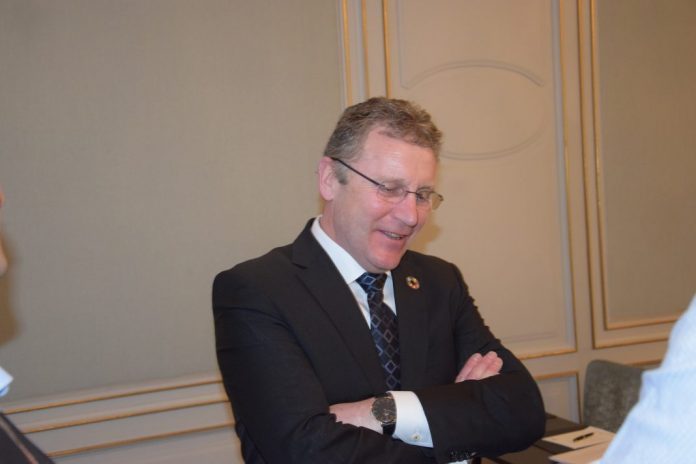En route for 100,000 tonnes next year.
In a financial statement this morning, the company achieved an EBIT before biomass adjustment of EUR 27 million and an EBIT/kg of NOK 18.07 (EUR 1.8) in the first quarter – up 27% from Q1 2018. In total, Grieg’s revenue for the quarter was EUR 168 million, after having harvested 14,801 tonnes of salmon.
While the company emphasised good biological operations in Norway and Canada, and in particular cost reduction in the former, there are still high costs driven by biological challenges in Shetland.
Improvements
Grieg CEO Andreas Kvame said: “During the first quarter Grieg Seafood experienced strong growth and continued biological improvements, particularly in Finnmark and Rogaland. Our strong performance is a result of our skilled employees’ dedication to our strategic focus areas – large smolt, digitalization, biosecurity and fish welfare and operational expansion.”
“We are still in the early stages in executing on our priorities and we expect continued growth and operational improvements going forward. We remain confident in our 2020 target of 100 000 tonnes harvest with cost at or below industry average, and with our five pillars for sustainability, we remain committed to our ambition for sustainable salmon farming and long-term value creation for all our stakeholders,” he added.
The company expects to harvest 82,000 tonnes this year.
The Group’s total share of fixed-price contracts in Norway in Q1 2019 was 17%. The share of fixed price contracts for Norway and the UK is estimated to be 20% for the year.
New technology
Through the digitalization strategy “GSF Precision Farming,” Grieg Seafood intends to take a leading role in utilizing new technology, big data and artificial intelligence to improve operational efficiency through reduced environmental impact, increased fish welfare and improved growth.
With a strict focus on biosecurity and fish welfare, Grieg Seafood aims to achieve strong biological performance through the implementation of a broad range of technological and operational initiatives, including large smolt, GSF Precision Farming and other preventive operational measures aimed at combating sea lice and algae. The group targets an average survival rate in seawater above 93%.

